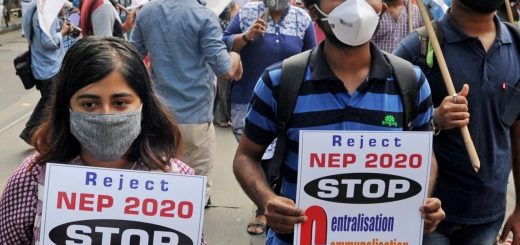Taliban 2.0: een analyse vanuit een Indiaas perspectief
India is een van de belangrijke buurlanden van Afghanistan. We hebben ook aan professor Bernard D’Sami gevraagd om naar de gebeurtenissen in Afghanistan te kijken vanuit een Indiaas perspectief.
Hij schetst een genuanceerd beeld van de historische en actuele feiten en legt een paar klemtonen die meer op de achtergrond zijn geraakt. D’Sami wijst erop dat de taliban met regeringsleider Ashraf Ghani hebben onderhandeld om Kaboel zonder bloedvergieten in te nemen. Verder zegt ook hij dat de VS, Pakistan en Saoedi-Arabië zelf aan de basis liggen van het ontstaan van de taliban.
Amerika heeft destijds miljarden geïnvesteerd in steun en wapens aan Pakistan en Afghanistan om Rusland te verdrijven. Dat had ook gevolgen voor de intussen 74 jaar durende bittere strijd in Kashmir tussen Pakistan en India. Maar die Amerikaanse en Saoedische ‘investeringen’ werden nadien (vanaf 1992) ook aangewend voor de opbouw van de talibanbeweging (1994-2001).
Verder wijdt D’Sami kort uit over de onderhandelingen vanaf 2019 tussen de taliban en de VS in Doha. Hij schetst de pro’s en contra’s van de huidige machtsovername en hoopt dat ook het Indiase opbouwwerk (o.a. een dam) niet vergeefs zou zijn geweest en dat hindoes, Sikhs en andere minderheden het niet zullen moeten verduren.
The Taliban have taken control of Afghanistan for the second time on 15 August 2021. The usurping happened after 20 years of their rule in Afghanistan particularly, in Kabul, the capital city. The speed with which they have occupied entire Afghanistan after the withdrawal of US and NATO forces has come as a shock. Kabul had fallen into their control within ten days from the withdrawal of US forces.

Many estimated, including the United States, that the capital would take at least three to six months to fall. However, the Taliban forces were advancing from their stronghold Northwest towards the capital, Kabul. Kandahar fall was significant as it was the birthplace of the Taliban. Among the approximately thirty-four provinces of Afghanistan, most did not offer any resistance to the advance made by the Taliban. They either retreated or surrendered to the advancing forces.
The Taliban started a negotiation with the President of Afghanistan, Ashraf Ghani, at the border of Kabul. It was evident that both sides (government and Taliban) were keen to avoid bloodshed and destruction to the property. The President decided to leave secretly to the UAE, which has given him an asylum to enter with his family.
In response to the Soviet invasion of Afghanistan in 1979, the US and Pakistan created the Taliban. This was the Cold War era and the US had the ‘contain the spread of communism’ policy as their top priority, which prompted them to invest their military and money in Pakistan to counter the Soviet Union. Some of these investments were diverted to India and that is how the Kashmir problem started.
The US and Pakistan created a group called Mujahedeen to counter the Soviet Union and these Mujahedeen were men from Pashtun, which is the majority community in Afghanistan.
They were trained in the Madrassas, Islamic religious seminaries, in Pakistan and in the Northwest provinces of Afghanistan.
The ‘Taliban’ or students in the Pashto language emerged in northern Pakistan with the financial support of Saudi Arabia. In 1995, they captured the province of Herat and a year later Kabul. In 1996, they dislodged the regime of Rabbani, founder of the Afghan Mujahedeen. From 1996 to 2001, they were ruling Afghanistan but were overthrown after the 9/11 terror attack that destroyed the twin towers in the US.
The ‘war on terror’ by the US and NATO partnership, continued for 20 years. In 2019, the US started negotiating with the Taliban to bring about peace and to end its military presence.
On 29th February 2020, the talks were held at Doha in Qatar and both sides agreed on many things but one assurance that the US exacted from the Taliban was that their territory should never become an epicentre for hatching terror attacks on another country. What was transpired and agreed between them is not known but the US decided to withdraw the forces by 31st August 2021.

With the US withdrawal of forces, the Taliban moved into the capital and occupied it without a civil war and bloodshed.
There is criticism that the US has abruptly withdrawn from Afghanistan, but it is not fully true because the negotiations between the US and Taliban for the withdrawal of US forces and the conditions for the new government by the US has begun from 2019 onwards.
As US President Joe Biden said that this would have happened, implying chaos and confusion, at any time after their withdrawal. Many thought that the new Taliban 2.0 would be a refined and reformed Taliban but the happenings in a week’s time after their take over have proven their assessment wrong.
The biggest question is whether the reforms introduced by the US in the last 20 years will be retained and followed by the Taliban, such as, education, women’s empowerment, civil society organizations, democracy, constitution, and rule of law. The US invested money and material in billions in Afghanistan in introducing such changes.
The positives are that they (Taliban) have had a meeting with the first democratically elected President Hamid Karzai and his foreign minister Abdullah Abdullah. This means that they (Taliban) would like to have them for their rule as either advisers or directly designating responsibility in the new administration.
The negatives are whether they will return to their rigid interpretation of the Sharia law as it comes to women, marriage, education, and property. If the Taliban are going to build on what has been done by the US in the last 20 years, it will follow the path of democracy otherwise it will be a repeat of the 1996-2001 rule, which was a hardliner Sharia interpretation and implementation.
As for India, it played a major role in the construction of a dam, other infrastructure, and human development in the last 20 years. India’s work should speak louder than our words and should engage with the Taliban to protect the Hindus, Sikhs, and other minorities in the country. Meanwhile, one has to wait and observe as the Taliban 2.0 unfolds.
Bernard D’Sami
Dr Bernard D’Sami is a Senior Fellow at LISSTAR, Loyola College (Autonomous), Chennai – 600 034, India



